
Thomas W
-
Posts
788 -
Joined
-
Last visited
-
Days Won
3
Content Type
Profiles
Forums
Blogs
Gallery
Events
Store
Posts posted by Thomas W
-
-
One that you might be interested in is a couple of clear photos of an awards ceremony attended by the crown prince. The soldier nearest to the camera has a Sturmgepäck on his back and a metal sewn-on sleeve insignia of crossed grenades on his upper arm. I have one of the insignia that I got at the same time that I got the photos.
I think I've seen that insignia. Didn't you post it on this forum somewhere?
As for your cap, if it's from Sturmbataillon Nr. 14, the skull badge could be Austrian, since part of Sturmbataillon Nr. 14 was merged with part of Sturmbataillon Nr. 16 and Austrian assault units to form the provisional Sturmbataillon der Heeresgruppe Herzog Albrecht for the Battle of Caporetto. I have a photo of a Bavarian member of the AlpenKorps wearing two Austrian badges on his cap.
The Württemberg cockade is one of those mysteries that might never be explained. I have several photos of assault troops wearing mixtures of Württemberger, Prussian, Saxon, and Bavarian cockades and belt buckles. It seems that assault units were often made up of men from all over the German empire. I have a photo of a Schütze from Württemberg Mountain Machine Gun Detachment 250 wearing a cap with a Bavarian state cockade. I also posted closeups of a photo of a Kanonier from an infantry accompanying battery wearing a Württemberg cockade and a Saxon belt buckle.
I think the German kingdoms had a lot more interaction between their armies than was previously thought, particularly when it came to elite, specialist units.
0 -


Just to explain .............. for 30 years I had been looking for a flammenwerfer TK.
By 2008, I had basically given up.
In 2009, I missed TWO of them by 10 MINUTES !!!!



This week, I finally got one of the two.

Thanks again, Don.
This photo haunts me to this day. The owner told me he would never sell it, so I gave up. A few months later, I contacted him to ask if I could use it in a book, but he told me he had... sold it.
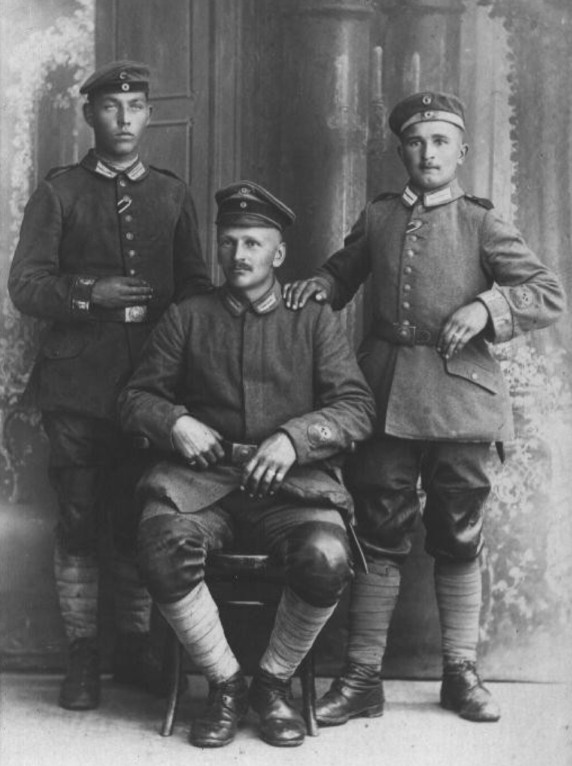 0
0 -
For the linguistically challenged .....................

I'll feel that way when I find the carte-de-visite of a Sturmbataillon Rohr flamethrower pioneer with a Totenkopf Pickelhaube.
0 -
Thanks, Thomas.

You always have access to some great photos.
Most are part of my collection. I've bought a lot of them either at local paper shows or on Web sites other than eBay. Takes a lot of detective work, but the great bargains have made up for the insane prices I've paid for eBay items.
By the way, this is why I think your Totenkopf could easily be authentic. Have you ever seen Pickelhaube covers with Roman numerals and an "S" on them? I'll bet you haven't, and I'll bet none of us have seen mention of such insignia, either.
Just because a badge hasn't been seen in photos or described in records doesn't mean it didn't exist...
0 -
Ditto the above post ???
Photo of Shock Troop 14, Reserve Infantry Regiment No. 12, training for the assault at Skrobowa on November 9, 1916. The fourteen shock troops were each composed of six Kleif troops, each of which contained two Kleif squads; a hand-grenade squad from the flamethrower regiment; and several infantry squads armed with light machine guns and automatic rifles, under the command of flamethrower officers and deputy officers.
The man on the left has "R 12" on the front of his Pickelhaube cover, while the man on the right has "XIV S" on the left side of his. This is a low-resolution scan I enlarged. The original photo is now with the publisher.
 0
0 -
All good points Thomas. I get the same emotion upon discovering something formerly unknown or unproven in a period photo. I have some unpublished/unknown surprise photos myself.
Speaking of the "St." abbreviation, I have a cap that came out of the woodwork (I am the first collector to own it) that has an unusual skull on the front between the cockades and is marked inside "St.B.XIV". I'm not saying that this is a Sturm-Batl. marking, but I have not been able to nail it down with any certainty. I suppose it could be a battalion staff marking of some sort, but it just seems odd that it is with a corps type numeral. Perhaps it is not a corps mark at all, as, of course, the original Württemberg cockade would indicate the XIII Korps and the cap has that appropriate BA mark as well. There is also an unreadable circular stamp that is very intriguing. It is not easy to see, but I have included some of the markings for your viewing.
I have photos of infantry squads and shock troops denoted by Roman numerals. There were also divisional assault battalions informally organized but given names or numbers. They may have used Roman numerals.
So, what are some of your photographic surprises?
0 -
I still think I'd take the insignia. I love the photos too, but I have been collecting cloth since 1961. Once a photo is published, everyone can have a copy, but a photo of a rare piece of cloth is the same, a copy that anyone can have. I'll take the patch. To each his own.

Chip
Interesting. I just finished my book about German assault troops; in the process of writing it I found lots of original photos of previously undocumented insignia, as well as photos of new equipment and weapons I've heard of but never seen.
When I found what will be the first published photo of a fire tube squad (Brandröhrentrupp), it gave me the same thrill that I'm sure you, Robin, Chris, and Sergeant08 feel when you open the package that contains the insignia you bought. For me, it's the excitement of documenting new information, such as shoulder-strap insignia for hand-grenade squads and patrol squads, or the German use of steel helmets with the rim cut off, or a device that allowed a grenadier to use only one hand to pull the pins of egg grenades and throw them.
I found a photo of an assault infantryman with "St." on the front of his Pickelhaube cover, an abbreviation for Stosstrupp, Sturmtrupp, or Sturmabteilung. That was one of my most satisfying discoveries. That, and my photo of a machine-gun squad of the Howitzer Battery of Sturmbataillon Nr. 5 (Rohr); one of the men wears the Rohr sleeve badge, but on his upper right arm instead of lower left. Did the battalion artillerymen wear it there to differentiate themselves from the assault pioneers? Who knows? But nobody's ever documented this before.
If I ever get a hold of rare insignia, I'll know who to contact. Let's do some trading!
Addendum: I just figured out why I prefer photos: They prove the authenticity of the insignia. In the past, if I saw an Überzug with "St." on the front, I wouldn't think it was genuine. But now that I have a period photo of a guy wearing such an item, I know it's real.
0 -
The personal, individual collecting bug is interesting. I prefer period photos to actual insignia. I can't explain why. I think it's because I like seeing the context of the insignia.
Here's a question for those of you with large insignia collections: Let's say a crazy dealer offered you one of two items for the same price. One item is an original white Flammenwerfer regiment death's-head sleeve badge, the official second variation that appears in photos but has yet to appear on eBay. The other item is a pristine carte-de-visite of a flamethrower pioneer of Sturmbataillon Nr. 5 (Rohr) wearing the Garde-Pionier Pickelhaube with the Brunswick Totenkopf on the front, and he's also wearing a Prussian Totenkopf sleeve badge. I've never seen a period photo of the Flammenwerfer Pickelhaube. Some say it doesn't exist, but for the sake of this argument let's say it does.
Which would you choose, if they were selling for the same price and if you could choose only one?
For me, it's no contest. I'd choose the photo, with no regrets.
0 -
Very nice, Robin. Don't forget the official variation of the flamethrower sleeve badge, which is either white or dove gray.
You still have miles to go before you sleep...
 0
0 -
Due to a shortage helmets, the 16th, 17th, 20th, and 21st Bavarian Reserve Infantry Regiments were issued black oilcloth caps in September of 1914. This headgear was supplied with the waterproofed stone-gray cotton cover you see in the photo.
0 -
Ouch.. I did not think it would go that high!
A pittance! I watched this one for 10 days. Final sale price: 445 Euro.
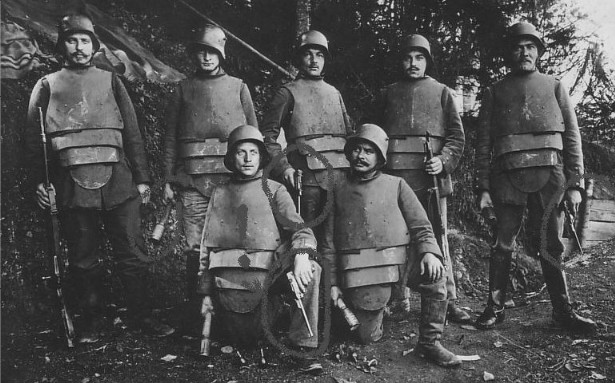 0
0 -
I have always wondered.... nowdays PTSD is all over the media... so many guys seem to have it....
But you seldom if ever hear of it for WW1... there must have been many cases, how did they keep them quiet?
The more I think about it the more I think they accepted it and covered for the guys with "erkrankt"
Best
Chris
Part of it was that at that time psychological issues simply weren't discussed publicly. But doctors were well aware of the problem.
Shell Shock and its Lessons (1918):
0 -
"My" flamethrower pioneer fought for several months after his stint in a civilian job. He even took part in antitank warfare.
If he was given a civilian job because he wasn't physically fit for combat duty, he certainly recovered enough to go back to the battlefield.
0 -
I have a Militärpass of a flamethrower pioneer who fought for a year straight, was sent to the hospital twice (once for burns on his head and once for combat wounds), went to work in Berlin at a private company for four months, returned to the replacement battalion of the flamethrower regiment, was transferred into a line-pioneer formation, fought at Cambrai and the Sigfried Line for another three months, was sent to hospital for an ear infection, returned to combat, and was then transferred into the Riesenfleugzeug-Truppe, where he worked on giant R-class bombers until the end of the war.
0 -
I actually posted parts of my photo before, to try and identify the unit. It turns out that the small "G" badge means he belonged to an Infanteriebegletbatterie, because no other artillerymen were trained to use the Granatwerfer. The weird thing is he has a Württemberg cockade and a Saxon belt buckle.
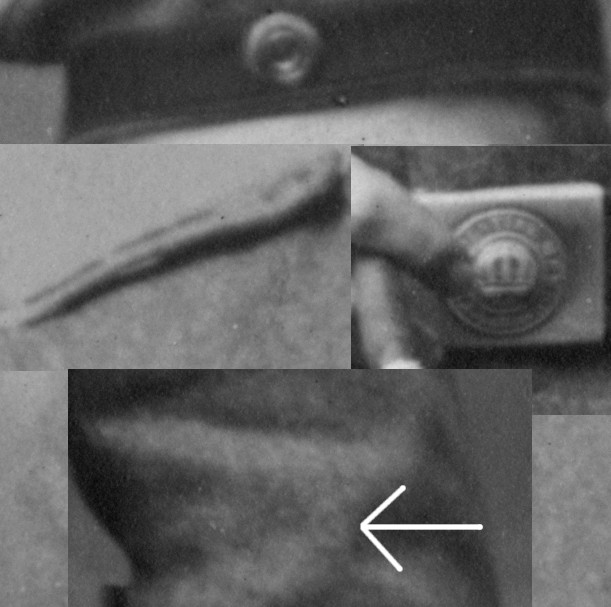 0
0 -
Hi,
Are you sure it is an Infanteriebegleitbatterie? The guys are from a Granatenwerfer 16 group and could have been regular infantrymen part of a regular infantry section? (I must admit, I did not see the stamp on the back of the card though). I cant remember what cuffs they had on their tunics.
Ouch.. I did not think it would go that high!
Sorry for not being clear. I meant that my own photo shows a Kanonier from an Infanteriebegleitbatterie. This one shows men of from Infanterie-Regiment Nr. 25.
If the German eBay seller had shipped outside of Germany, I would've bought this one, price be damned. I'll have to be content with my own photo, which is nowhere near as clear.
0 -
Infanterie-Regiment Nr. 25. Sold on eBay for 128 Euro. I have a photo that shows a Kanonier of an infantry accompanying battery (Infanteriebegleitbatterie) with an embroidered "G" badge at his elbow; the artillerymen of infantry accompanying batteries were trained and equipped as infantrymen.
Never seen a badge like this, though.
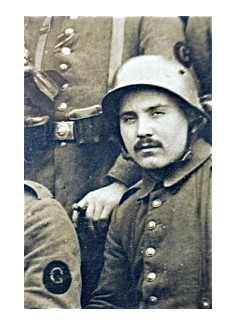 0
0 -
Bought a postcard on eBay for $1.75. Nobody else bid on it. Tiny scan with very little detail.
Turned out to be a flamethrower pioneer of Stumbataillon Nr. 5 (Rohr). It's one of the clearest period photos of a skull sleeve badge I've ever seen...
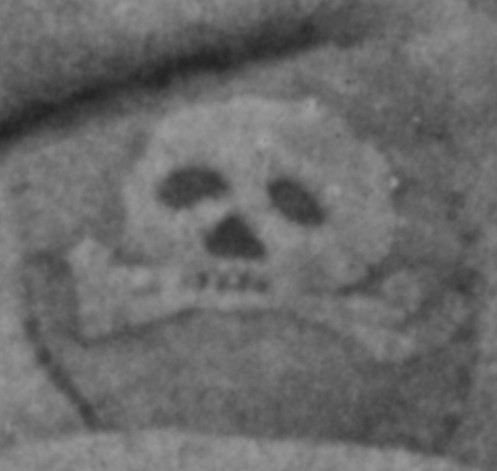 0
0 -
Someone has now suggested to me that the black skull might be unofficial Austro-Hungarian...............for Austrian FW troops trained by the Germans ????

Interesting. Many Austrian assault units adopted the death's head after seeing it on the flamethrower platoon of Assault Battalion No. 5 (Rohr), which began training Austrians in 1916.
The Austrian flamethrower battalion, Sappeur-Spezial-Bataillon Nr. 61, had a death's head cap badge.
 0
0 -
-
Can anybody tell me what this handwriting says?
 0
0 -
Looking more and more like a badge to me...
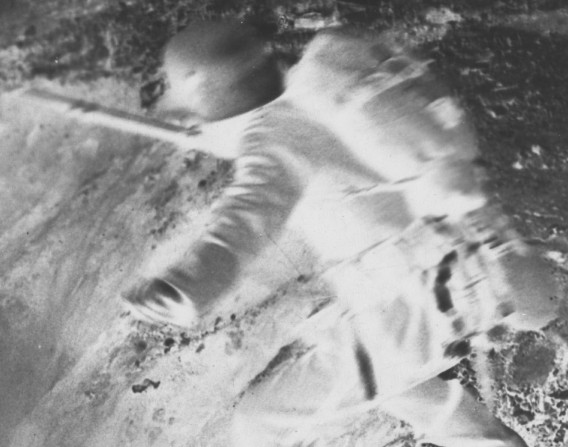 0
0 -
The one on his Left Elbow and on his blanket are also well defined ;-)
Actually, I turned it into a negative, and not only is the shadow on the elbow not as defined, in the negative there appears to be a cloth oval around the "shadow" on the cuff.
The real details in the Shroud of Turin didn't show up until photographic negatives were studied...
 0
0 -
Here is a close-up, enhanced shot of the cuff. I thought it was a shadow at first, but the edges look very well defined.
An experimental infantry flamethrower unit that trained with captured French weapons? Sounds like the sort of guys who might rig up an unofficial black skull badge for themselves...
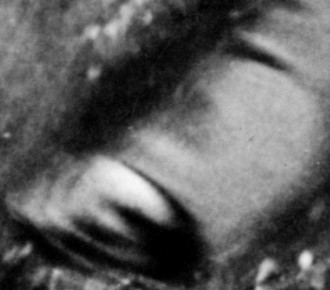 0
0


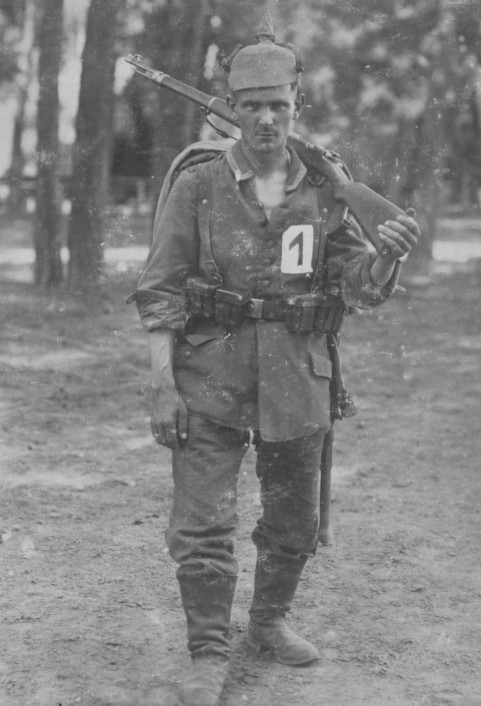
Flammenwerfer! Flames, skulls and stuff
in Germany: Imperial Uniforms, Headwear, Insignia & Personal Equipment
Posted
Another variation of the flamethrower Totenkopf sleeve badge. The badge on the left has no lower jaw. Compare it to the inset photo of the standard sleeve badge. I can't enlarge the jawless badge any more, because it loses definition. The photo depicts a platoon of flamethrower pioneers that includes at least three members of Sturmbataillon No. 5 (Rohr), so this jawless variation may have been an early Rohr badge that was later discontinued.